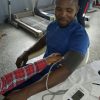What to Expect During Pregnancy: A Month-by-Month Guide
Pregnancy is an exciting journey filled with many changes and milestones. Understanding what to expect each month can help you prepare for the physical, emotional, and medical aspects of this important time. Here’s a month-by-month guide to help you navigate your pregnancy with confidence.
Month 1: Conception and Early Signs
- What’s Happening: Conception occurs, and the fertilized egg implants in the uterus. You may not yet realize you’re pregnant.
- Symptoms: Some women experience early signs like fatigue, nausea, and breast tenderness.
- Tips: Start taking prenatal vitamins, especially folic acid, to support your baby’s development.
Month 2: Embryo Development
- What’s Happening: The embryo starts developing major organs, including the heart, brain, and spinal cord.
- Symptoms: Morning sickness, heightened sense of smell, and mood swings are common.
- Tips: Schedule your first prenatal appointment to confirm the pregnancy and start monitoring your health.
Month 3: The First Ultrasound
- What’s Happening: The baby’s limbs and facial features begin to form. The heartbeat can often be detected during an ultrasound.
- Symptoms: Nausea may continue, and you might notice weight gain or changes in your skin.
- Tips: Discuss any concerns with your doctor and consider genetic screening tests if recommended.
Month 4: Entering the Second Trimester
- What’s Happening: The baby’s organs are fully formed, and growth accelerates. You may start to feel the first movements, known as “quickening.”
- Symptoms: Nausea typically subsides, and you may feel more energetic. Your baby bump may become noticeable.
- Tips: Maintain a balanced diet and stay hydrated. Start planning for childbirth and baby care.
Month 5: Mid-Pregnancy Ultrasound
- What’s Happening: The baby’s skeleton is hardening, and the skin begins to form a protective layer. The mid-pregnancy ultrasound can reveal the baby’s sex.
- Symptoms: You may experience back pain, leg cramps, and heartburn as your body adjusts to the growing baby.
- Tips: Focus on prenatal exercises and proper posture to manage discomfort. Enjoy this exciting stage!
Month 6: Feeling the Baby Move
- What’s Happening: The baby’s senses are developing, and movements become more pronounced. Your baby can now hear sounds from the outside world.
- Symptoms: Swelling in the feet and ankles may occur, along with Braxton Hicks contractions.
- Tips: Wear comfortable shoes, elevate your legs when sitting, and continue prenatal visits for regular check-ups.
Month 7: Preparing for the Third Trimester
- What’s Happening: The baby’s brain is rapidly developing, and body fat is increasing. Your baby is becoming more active.
- Symptoms: You may feel more tired and experience shortness of breath as your baby grows larger.
- Tips: Start discussing your birth plan with your doctor, and consider taking childbirth classes.
Month 8: Approaching the Final Stretch
- What’s Happening: The baby is almost fully developed, with lungs maturing and weight gain continuing. The baby may begin to move into the head-down position.
- Symptoms: Discomfort may increase as your due date approaches. You may also experience more frequent urination and difficulty sleeping.
- Tips: Pack your hospital bag, finalize baby preparations, and keep track of baby movements.
Month 9: The Big Arrival
- What’s Happening: The baby is ready for birth, with all organs fully developed. The baby’s movements may decrease as space becomes limited.
- Symptoms: You may experience nesting instincts, regular Braxton Hicks contractions, and increased pelvic pressure.
- Tips: Stay in close contact with your healthcare provider as you approach your due date. Review your birth plan and prepare for labor.
Conclusion
Each month of pregnancy brings new developments and experiences. By understanding what to expect, you can take proactive steps to care for yourself and your baby, ensuring a healthy pregnancy and a smooth transition to motherhood. Remember, every pregnancy is unique, so stay in regular communication with your healthcare provider to address any questions or concerns along the way.



